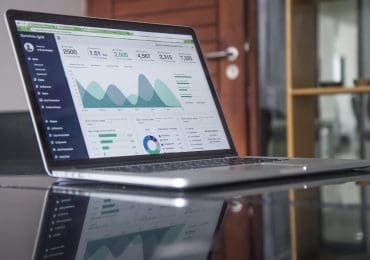Humans have been using historical data to predict future events for a very long time to varying degrees of success. Then, the advent of the computer helped us use historical data to build mathematical models that could help us do the same, but with much more accuracy. Recent advancements in machine learning, big data, and artificial intelligence now allow us to do this with a very high degree of certainty. The process of doing so is called predictive analytics.
Understanding Predictive Analytics
Predictive analytics is one branch of advanced analytics, and it helps us make predictions about future outcomes using historical data. It combines this data with machine learning, data mining techniques, and statistical modeling to help us make these predictions.
Companies now use predictive analytics to not only forecast future trends and outcomes, but to also identify opportunities and risks. Predictive analytics is heavily related to data science and big data. Because of how important it has become for businesses, there is a high demand for data analysts. You can tap into the data analytics market by completing data analytics certifications that arm you with the skills modern companies are looking for.
Leveraging Data for Predictive Analytics
The first step in leveraging predictive analytics is determining business objectives. Here, the objective is defined for us; to predict future trends and outcomes. Next, businesses need to determine the types of outcomes and trends they would like to predict.
Every business is different so their areas of focus and where they choose to put their effort will be different. For example, a retailer can collect data from its customers to find out the likelihood of a customer visiting their physical or online store again. They can also use the collected data to determine the types of promotions or sales specific customers will respond to positively in the future.
Some businesses may collect data to find out whether there will be a high demand for certain products during a specific season so they can order more when the time nears.
Determining Datasets
What type of data will the business collect? A business can answer this question easily once it knows its objectives and what it would like to forecast. In the first example above, the business can collect the customer’s purchase history, their email open rates, or even their click-through rate on emails and other marketing materials.
Businesses should ensure the data they collect is relevant, complete, and large enough. Irrelevant data wastes everyone’s time because it produces answers that predictive analytics is not interested in. Incomplete data also does the same, while small data sets do not produce any meaningful trends by their very nature.
Using the Right Software Solutions
Even when a business hires the best data analysts and has the data it needs, it will find it difficult to leverage both if it does not have the right software. The software chosen should enhance the skills and experience of the data analyst so they can produce predictions that will actually be useful for the business.
As competition heats up, businesses must start leveraging the tools available to get and stay ahead. One of these tools is predictive analytics which can help them forecast trends and outcomes. Doing so provides businesses with lots of opportunities, including ones to increase revenues and avoid risks.
